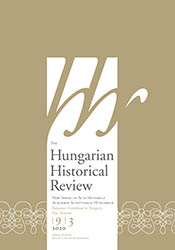The Stepfamily from Children’s Perspectives in Pest-Buda in the 1860s
The Stepfamily from Children’s Perspectives in Pest-Buda in the 1860s
Author(s): Emese GyimesiSubject(s): 19th Century
Published by: Magyar Tudományos Akadémia Bölcsészettudományi Kutatóközpont Történettudományi Intézet
Keywords: childhood; middle class household; parent-child relations; half-sibling relations; urban history; use of space; private and public spheres
Summary/Abstract: This paper examines the distinctive aspects of children’s letter-writing practices, sibling relationships, and the use of urban spaces by one of the most educated, intellectual stepfamilies in mid-nineteenth century Pest-Buda. In this bourgeois family, children grew up in an exceptionally rich intellectual atmosphere, as their mother (Júlia Szendrey) was a poet, writer and translator, their father (Árpád Horvát) was a historian, and one of their uncles (Pál Gyulai) was the most significant literary critic of the time. Consequently, reading and writing was a fun game and a source of joy for even the youngest members of the family. As a result, many of the analyzed sources were produced by children, offering us the exceptional possibility to examine stepfamily relations, emotional practices, urban and everyday life, as well as material culture from the perspective of children. The study aims to identify the practices through which the family experience and the family identity and the sense of belonging in the Szendrey-Horvát family were constructed.
Journal: The Hungarian historical review : new series of Acta Historica Academiae Scientiarum Hungaricae
- Issue Year: 9/2020
- Issue No: 4
- Page Range: 693-724
- Page Count: 32
- Language: English

